Stress Detection of Precast Pipe Piles Based on the Low-Loss Slotting Method
Abstract
:1. Introduction
2. Precast Pipe Pile Slotted Stress Release Test
2.1. Experimental Principle
- is the stress change difference, MPa.
- is the initial stress in the measurement zone, MPa.
- is the strain variation difference, με.
- is the initial strain in the measurement area, με.
2.2. Test Parameters
2.3. Experimental Results and Analysis
2.3.1. Analysis of the Measurement Results of the Oscillating Strain Gauge
2.3.2. Analysis of Strain Changes in Reinforcing Steel during Cutting
2.3.3. Analysis of Measurement Results of DIC Method
3. Numerical Simulation of Stress Release Process in Slotted Precast Pipe Pile
3.1. Finite Element Modeling of the Prestressed Pipe Pile Stress Release Process
3.2. Analysis of Numerical Simulation Results
3.3. Analysis of the Effect of Each Parameter on the Stress Release Rate
3.3.1. Effect of Slotting Characteristics on the Stress Release Rate
3.3.2. Effect of Load Level on Stress Release Rate
4. Stress Release Rate Prediction Model
4.1. Regression Analysis Based on Numerical Model Data
- A is the magnitude of the prestress in the longitudinal reinforcement, MPa.
- d is the depth of slotting by the stress release method, mm.
- x is the slotted width of the stress release method, mm.
- y is the stress release method slotting spacing, mm.
4.2. Model Correction Based on Experimental Data
4.3. Error Analysis
5. Conclusions
Author Contributions
Funding
Data Availability Statement
Conflicts of Interest
References
- Al-Jeznawi, D.; Jais, I.B.M.; Albusoda, B.S.; Alzabeebee, S.; Keawsawasvong, S.; Khalid, N. Numerical Study of the Seismic Response of Closed-Ended Pipe Pile in Cohesionless Soils. Transp. Infrastruct. Geotechnol. 2023, 10, 1–27. [Google Scholar] [CrossRef]
- Xie, F.; Ding, P.; Chen, X.; Zhao, W.; Ji, B. Characteristics of defects in expressway plate bridges based on maintenance data. J. Chongqing Jiaotong Univ. Nat. Sci. 2018, 37, 8–15. (In Chinese) [Google Scholar]
- Massoudi, N.; Teffera, W. Non-destructive testing of piles using the low strain integrity method. In Proceedings of the Fifth International Conference on Case Histories in Geotechnical Engineering, New York, NY, USA, 13–17 April 2004; Volume 1. [Google Scholar]
- Ramadan, S.; Gaillet, L.; Tessier, C.; Idrissi, H. Detection of stress corrosion cracking of high-strength steel used in prestressed concrete structures by acoustic emission technique. Appl. Surf. Sci. 2008, 254, 2255–2261. [Google Scholar] [CrossRef]
- Chen, H.; Nie, X.; Gan, S.; Zhao, Y.; Qiu, H. Interfacial imperfection detection for steel-concrete composite structures using NDT techniques: A state-of-the-art review. Eng. Struct. 2021, 245, 112778. [Google Scholar] [CrossRef]
- Xu, S.; Wang, X.; Zhu, R.; Wang, D. Uncertainty Analysis of Inverse Problem of Resistivity Model in Internal Defects Detection of Buildings. Buildings 2022, 12, 622. [Google Scholar] [CrossRef]
- Hafiz, A.; Schumacher, T. Monitoring of stresses in concrete using ultrasonic coda wave comparison technique. J. Nondestruct. Eval. 2018, 37, 73. [Google Scholar] [CrossRef]
- Teng, S.; Liu, Z.; Li, X. Improved YOLOv3-Based Bridge Surface Defect Detection by Combining High-and Low-Resolution Feature Images. Buildings 2022, 12, 1225. [Google Scholar] [CrossRef]
- Sandifer, J.P.; Bowie, G.E. Residual stress by blind-hole method with off-center hole. Exp. Mech. 1978, 18, 173–179. [Google Scholar] [CrossRef]
- Jing, Z. Technical Research on Testing Existing Stresses in Prestressed Small Box Girders Using Borehole Stress Release Method; South China University of Technology: Guangzhou, China, 2012. (In Chinese) [Google Scholar]
- Zhuang, C.; Zhang, J.; Jiang, H. Review of concrete stress testing technologies. J. Highw. Transp. Res. Dev. 2016, 33, 43–51. (In Chinese) [Google Scholar]
- Cao, W.; Li, X.; Tao, M.; Zhou, Z. Vibrations induced by high initial stress release during underground excavations. Tunn. Undergr. Space Technol. 2016, 53, 78–95. (In Chinese) [Google Scholar] [CrossRef]
- Abdel-Jaber, H.; Glisic, B. Monitoring of prestressing forces in prestressed concrete structures—An overview. Struct. Control. Health Monit. 2019, 26, e2374. [Google Scholar] [CrossRef] [Green Version]
- Taheri, S. A review on five key sensors for monitoring of concrete structures. Constr. Build. Mater. 2019, 204, 492–509. [Google Scholar] [CrossRef]
- Liu, Y. Experimental Study on the Working Stress of Concrete Tested by the Annular Hole Method. Master’s Thesis, Zhejiang University, Hangzhou, China, 2006. (In Chinese). [Google Scholar]
- Kral’ovanec, J.; Moravčík, M.; Bujňáková, P.; Jošt, J. Indirect determination of residual prestressing force in post-tensioned concrete beam. Materials 2021, 14, 1338. [Google Scholar] [CrossRef] [PubMed]
- Kral’ovanec, J.; Moravčík, M.; Koteš, P. Parametric Study of Saw-Cut Method. In Proceedings of the International Conference on Russian-Polish-Slovak Seminar Theoretical Foundation of Civil Engineering, Moscow, Russia, 13–18 September 2021; pp. 10–19. [Google Scholar]
- Cárdenas-García, J.F. The hole drilling method in photoelasticity application of an optimisation approach. Strain 2000, 36, 9–15. [Google Scholar] [CrossRef]
- Luo, J. Further Research on the Detection of Existing Stresses in Prestressed Small Box Girders Based on the Borehole Stress Relief Method. Master’s Thesis, South China University of Technology, Guangzhou, China, 2013. (In Chinese). [Google Scholar]
- Kusák, I.; Lunak, M.; Chobola, Z. Non-Destructive Tracking of Structural Changes of Concrete Mixtures during Thermal Stress. Appl. Mech. Mater. 2014, 617, 152–155. [Google Scholar] [CrossRef]
- Zhang, K.; Zhang, J.; Jin, W.; Mao, J.; Long, J. Stiffness degradation for fatigue of reinforced concrete beams after electrochemical rehabilitation. Constr. Build. Mater. 2020, 260, 120455. [Google Scholar] [CrossRef]
- Ma, J.; Andrus, P.; Condoor, S.; Lei, S. Numerical investigation of effects of cutting conditions and cooling schemes on tool performance in up milling of Ti-6AL-4V alloy. Int. J. Adv. Manuf. Technol. 2015, 78, 361–383. [Google Scholar] [CrossRef]
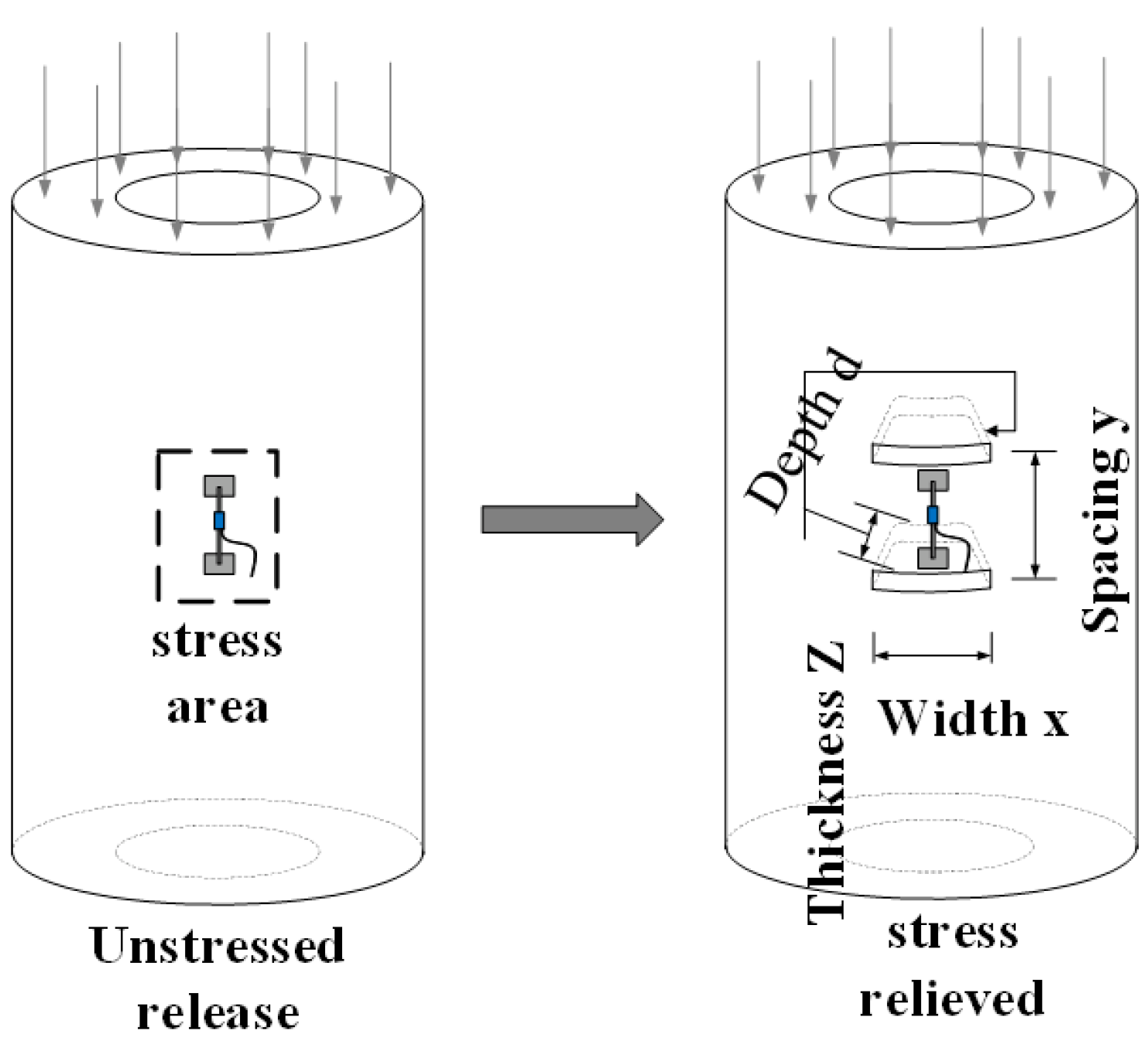
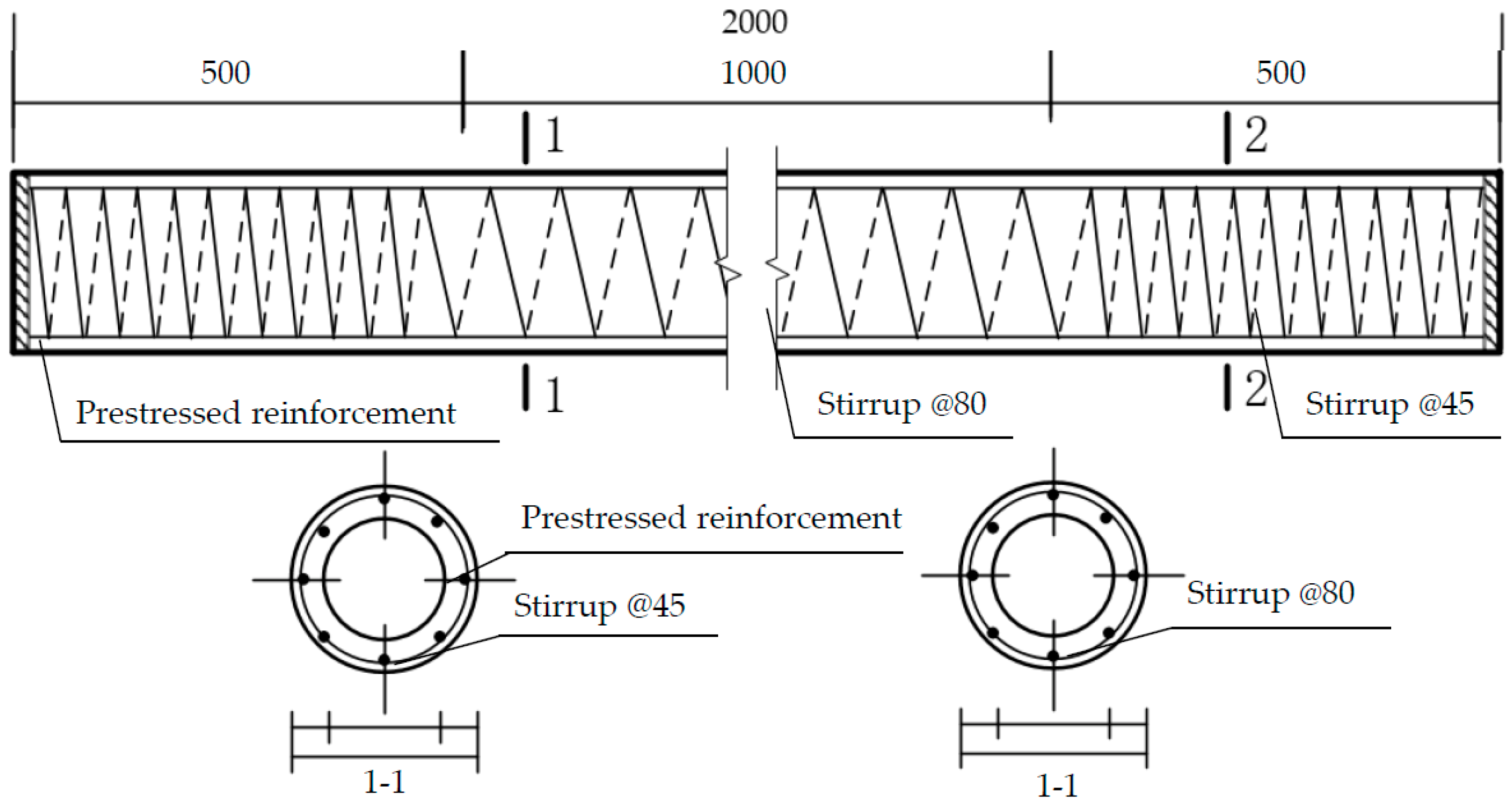
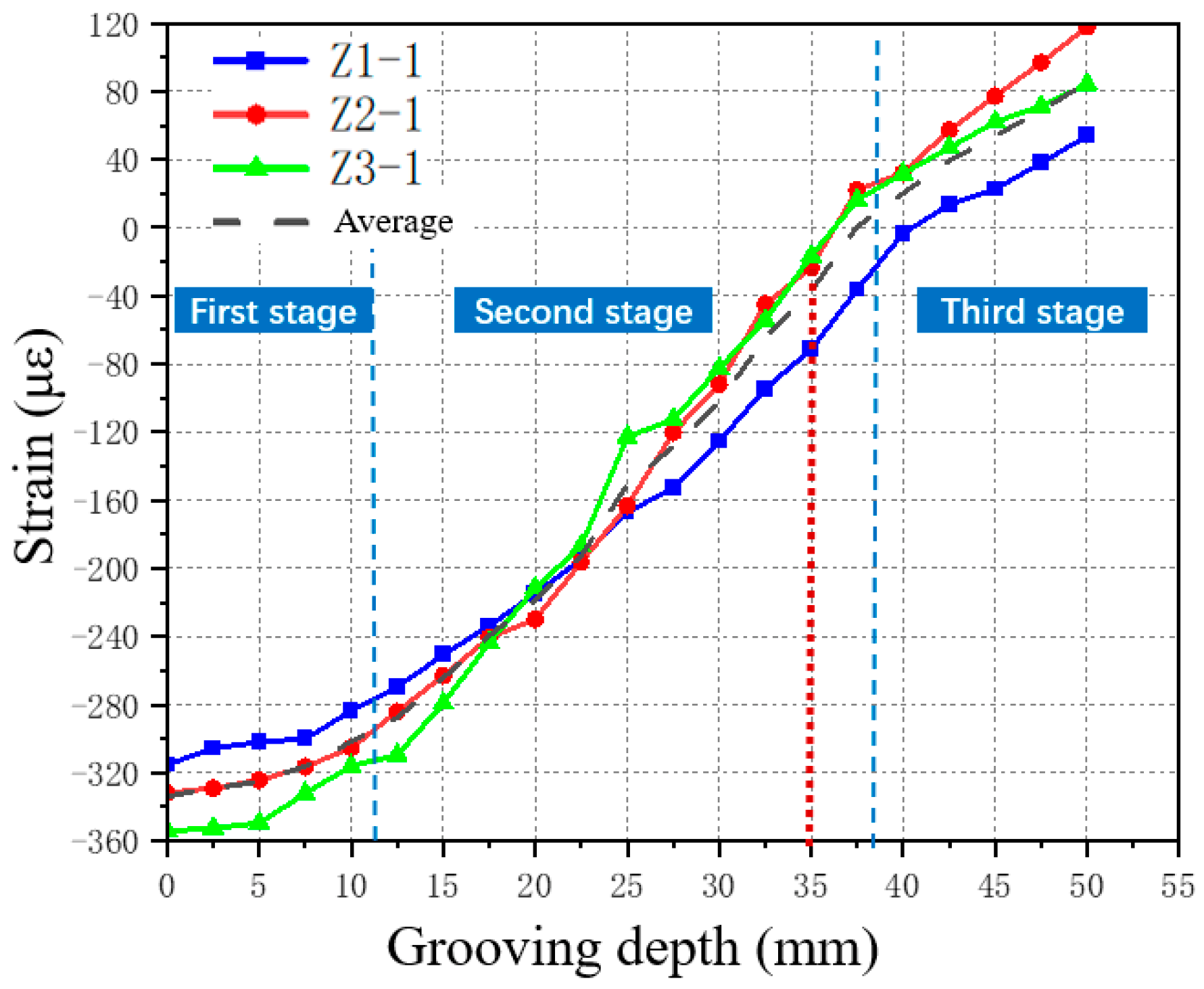
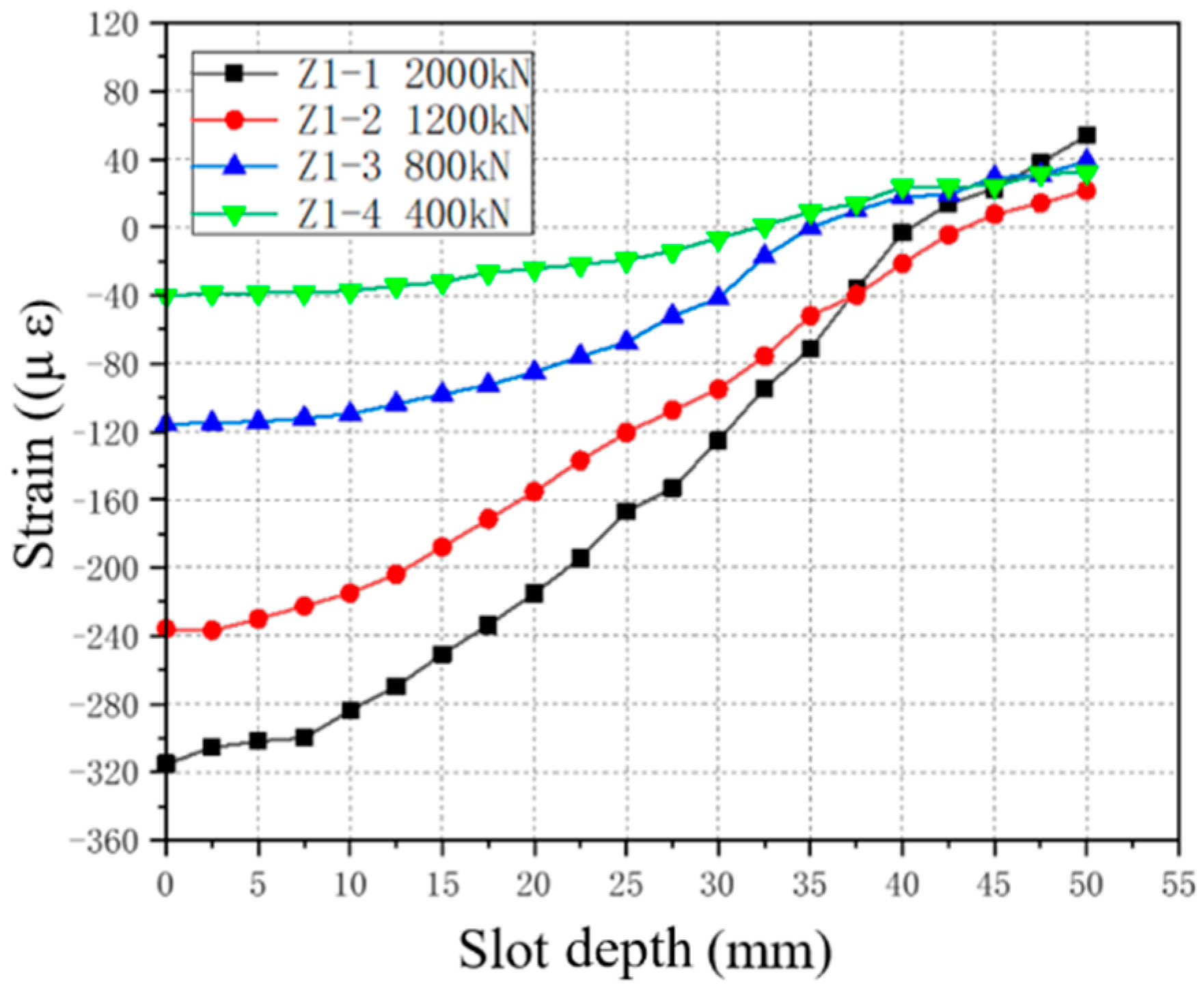
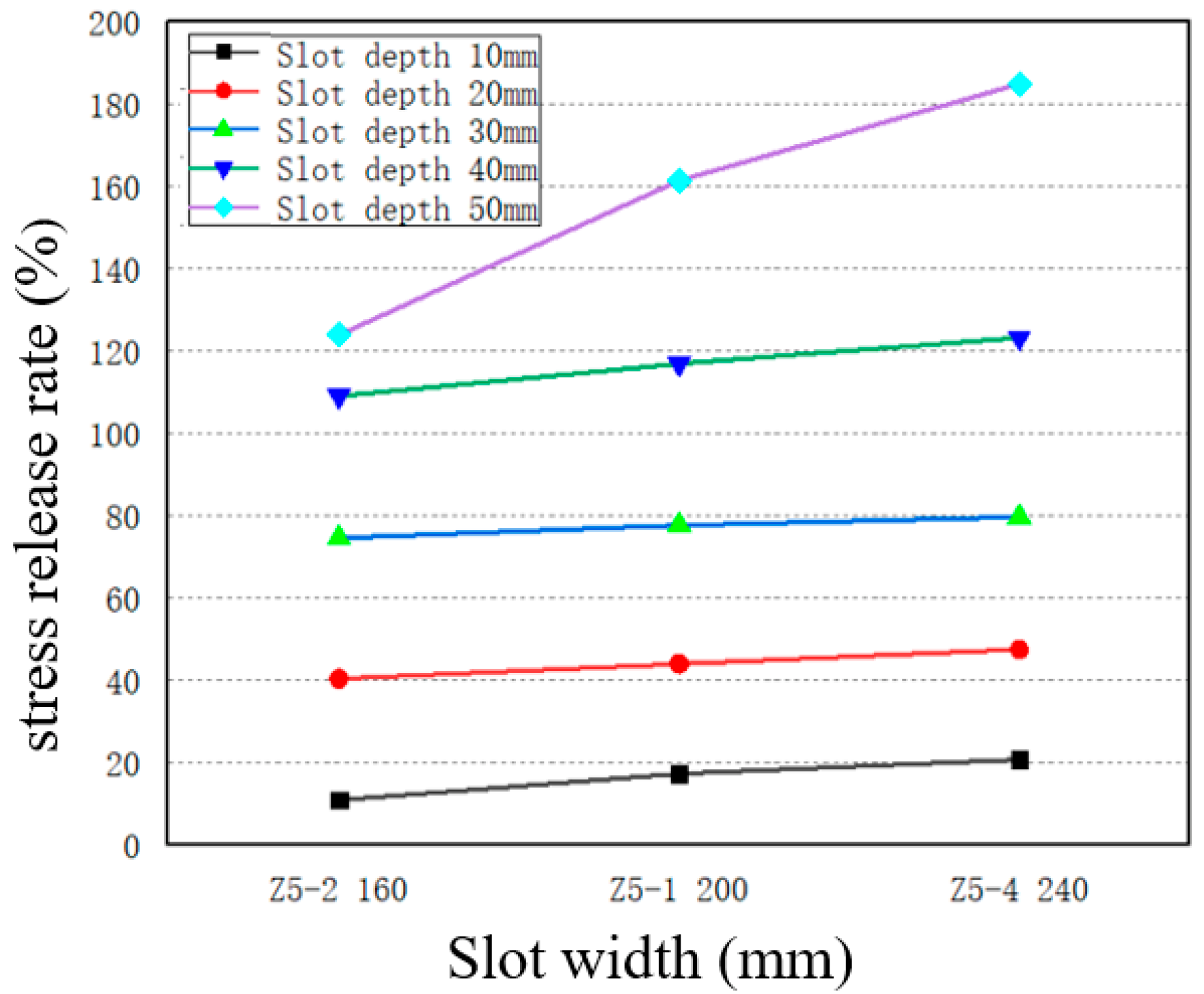
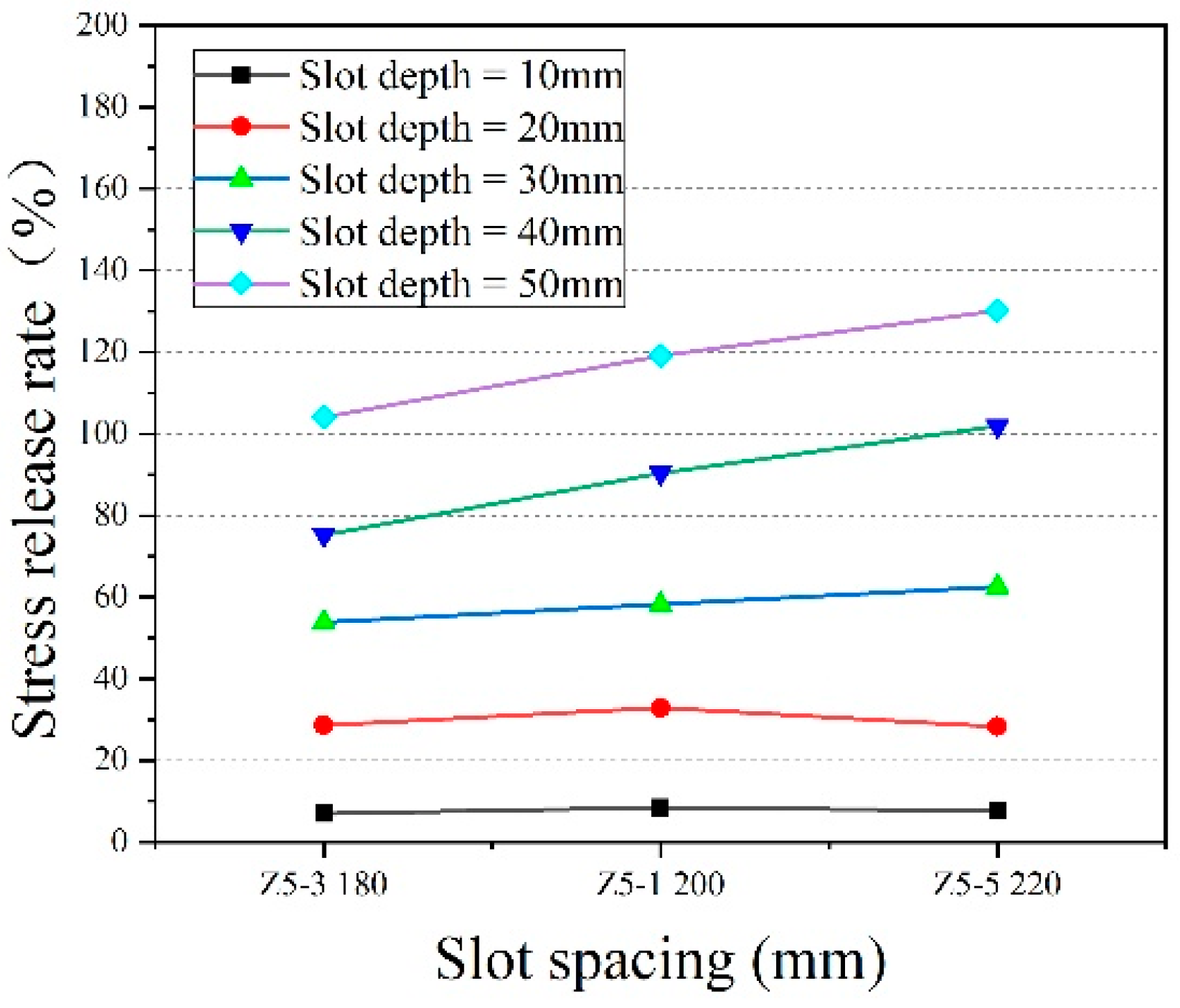

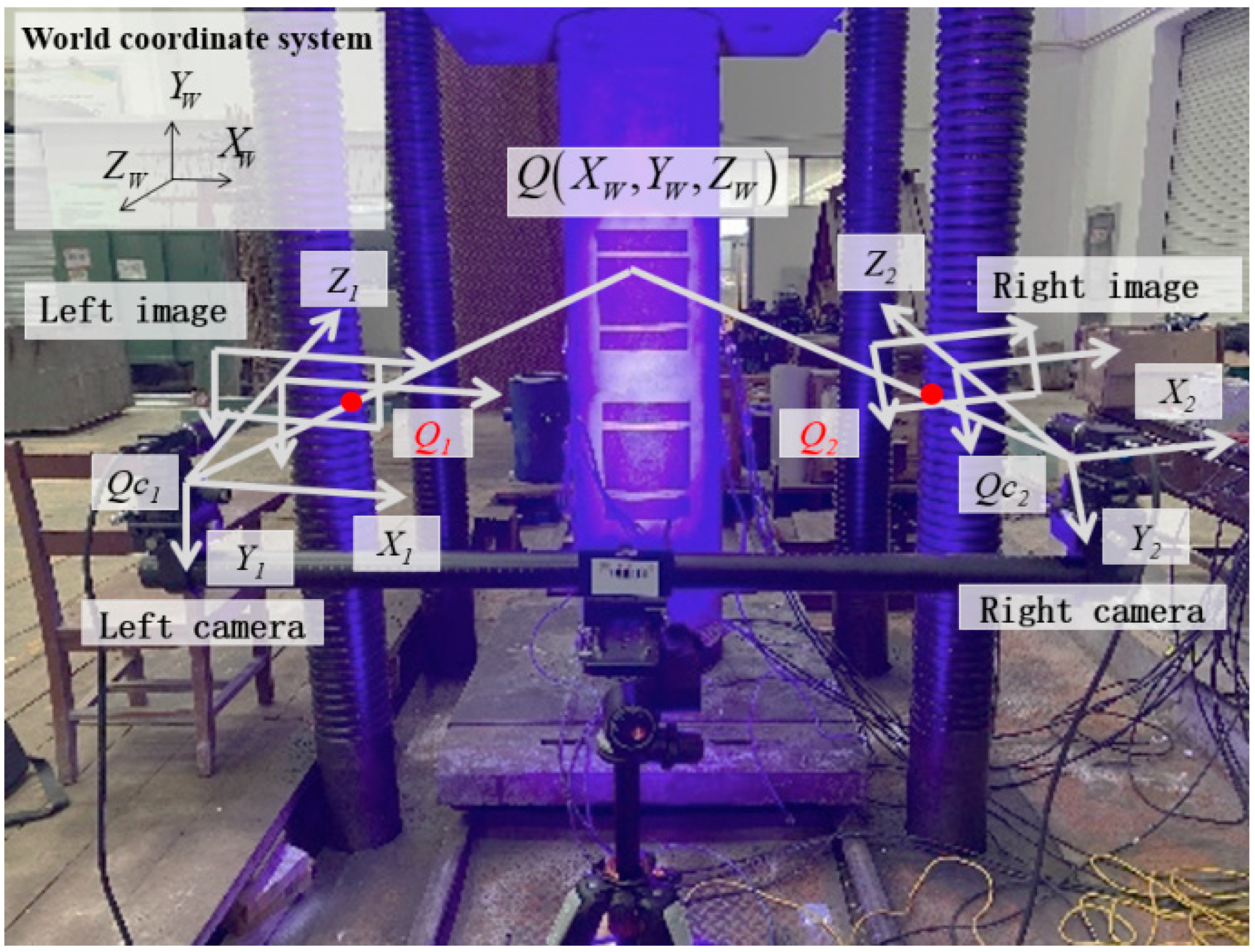
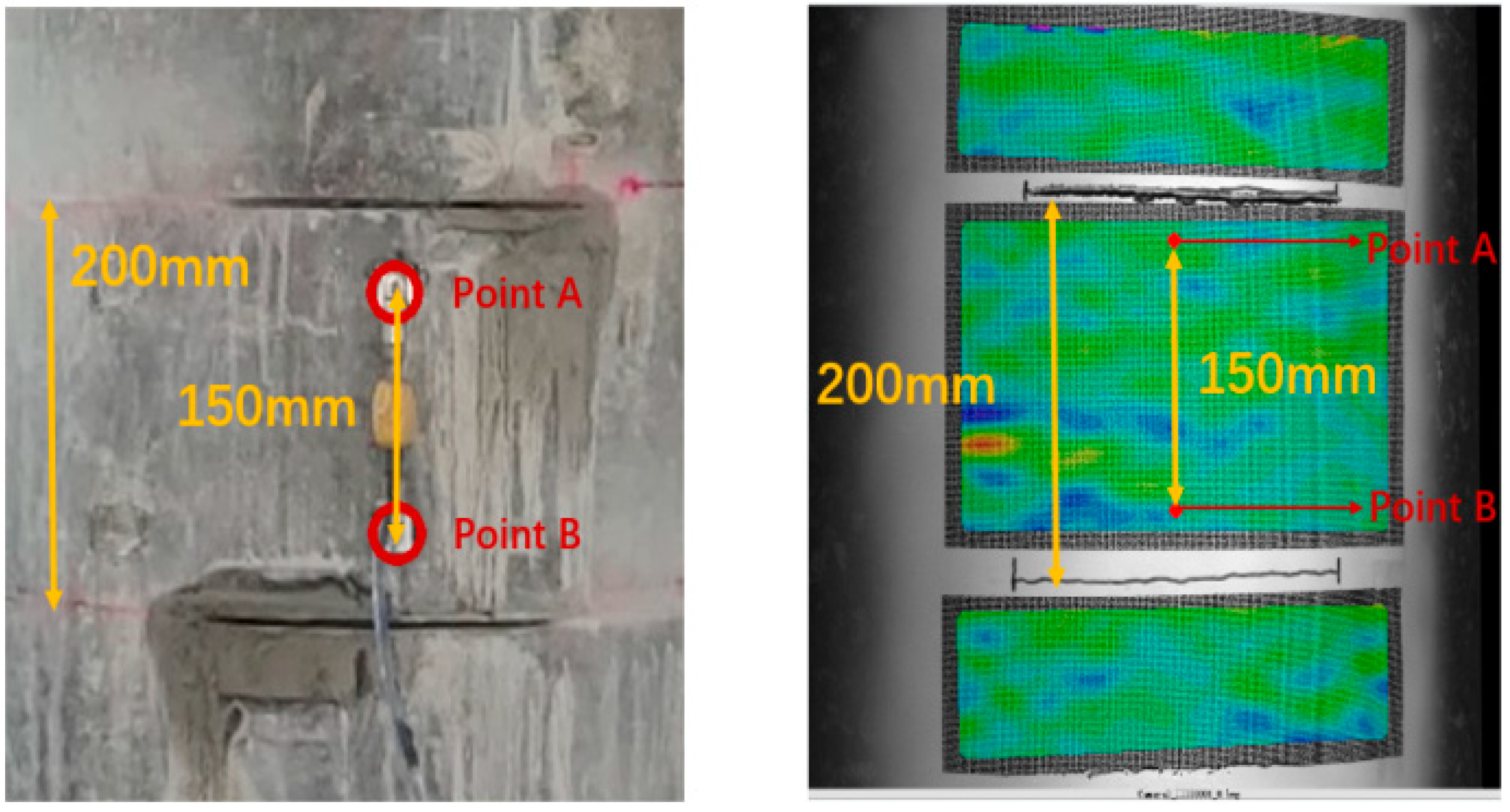
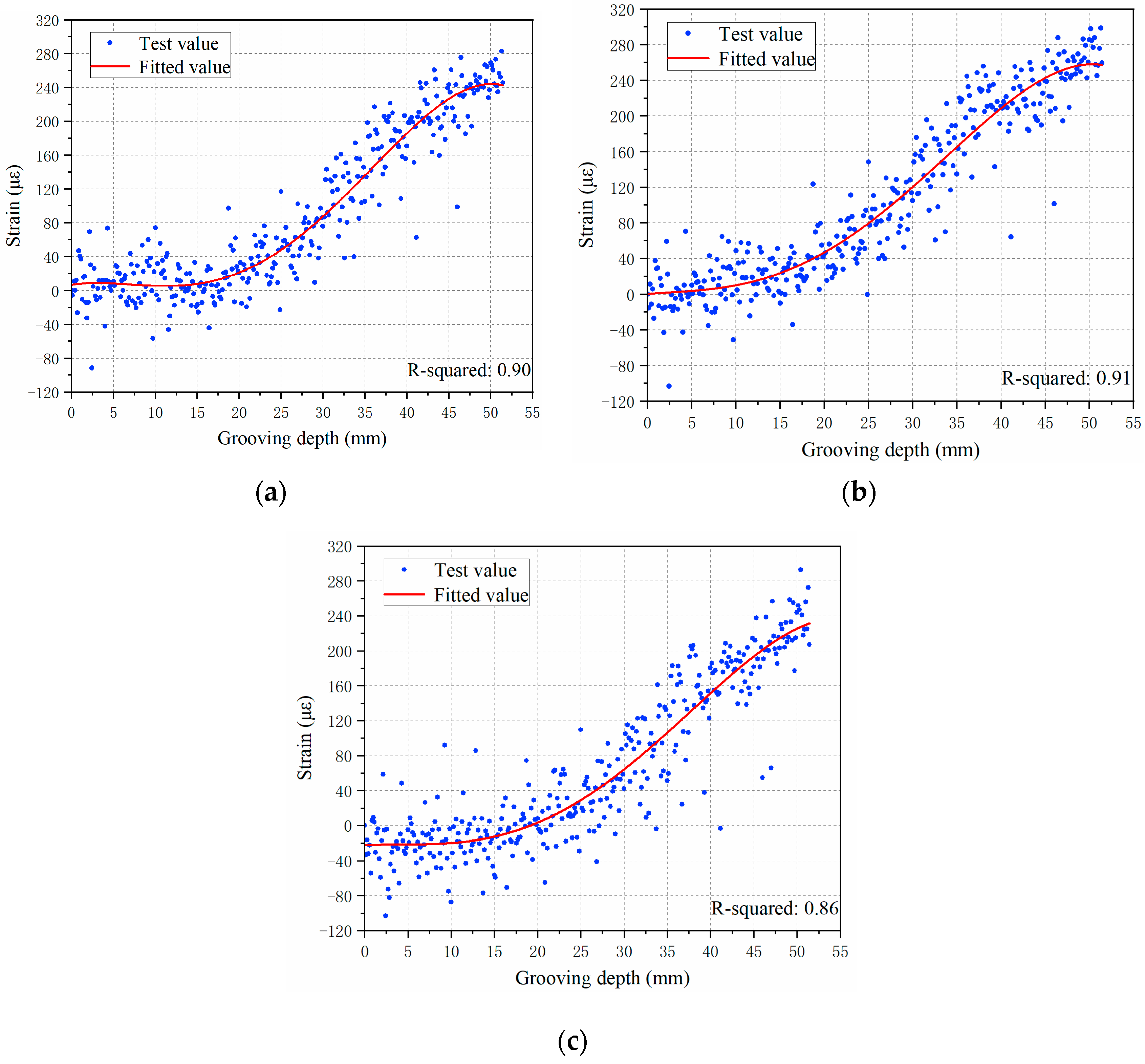
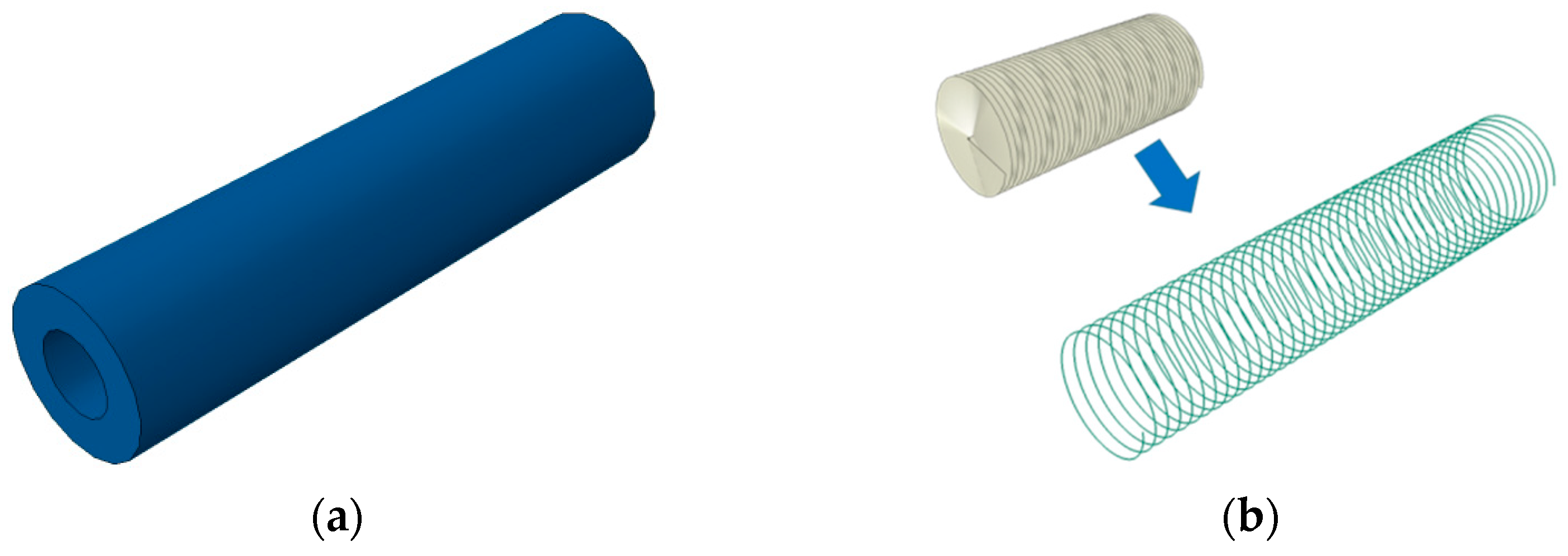
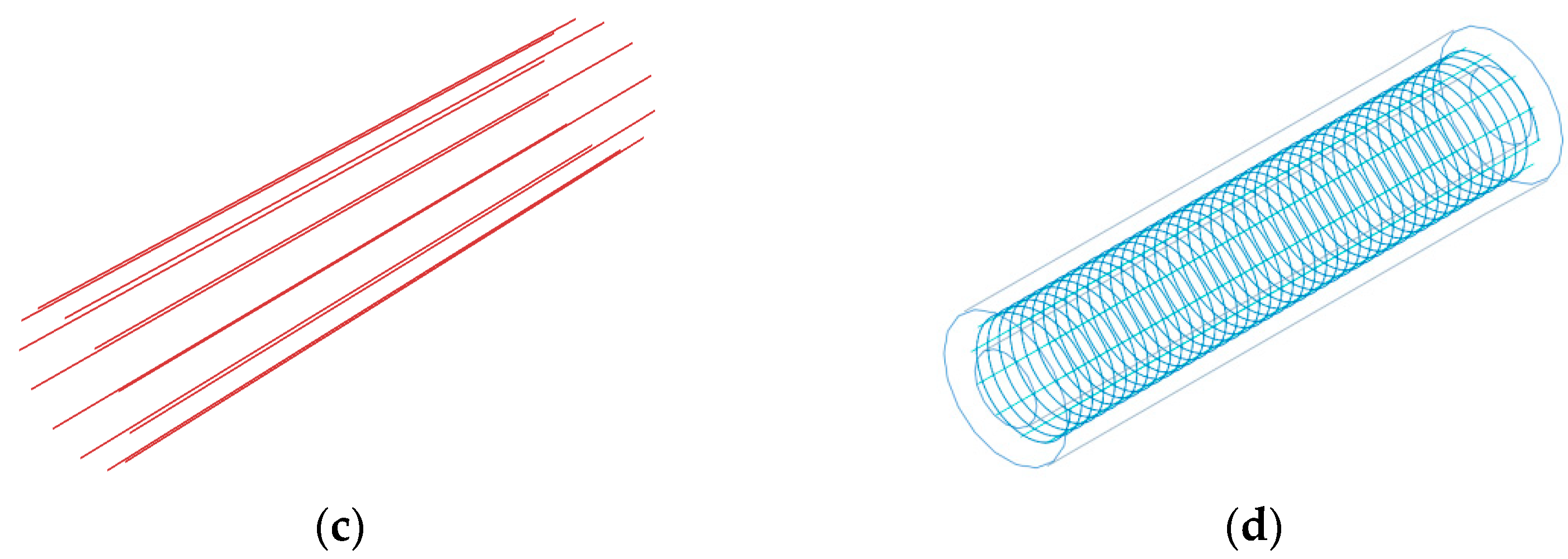
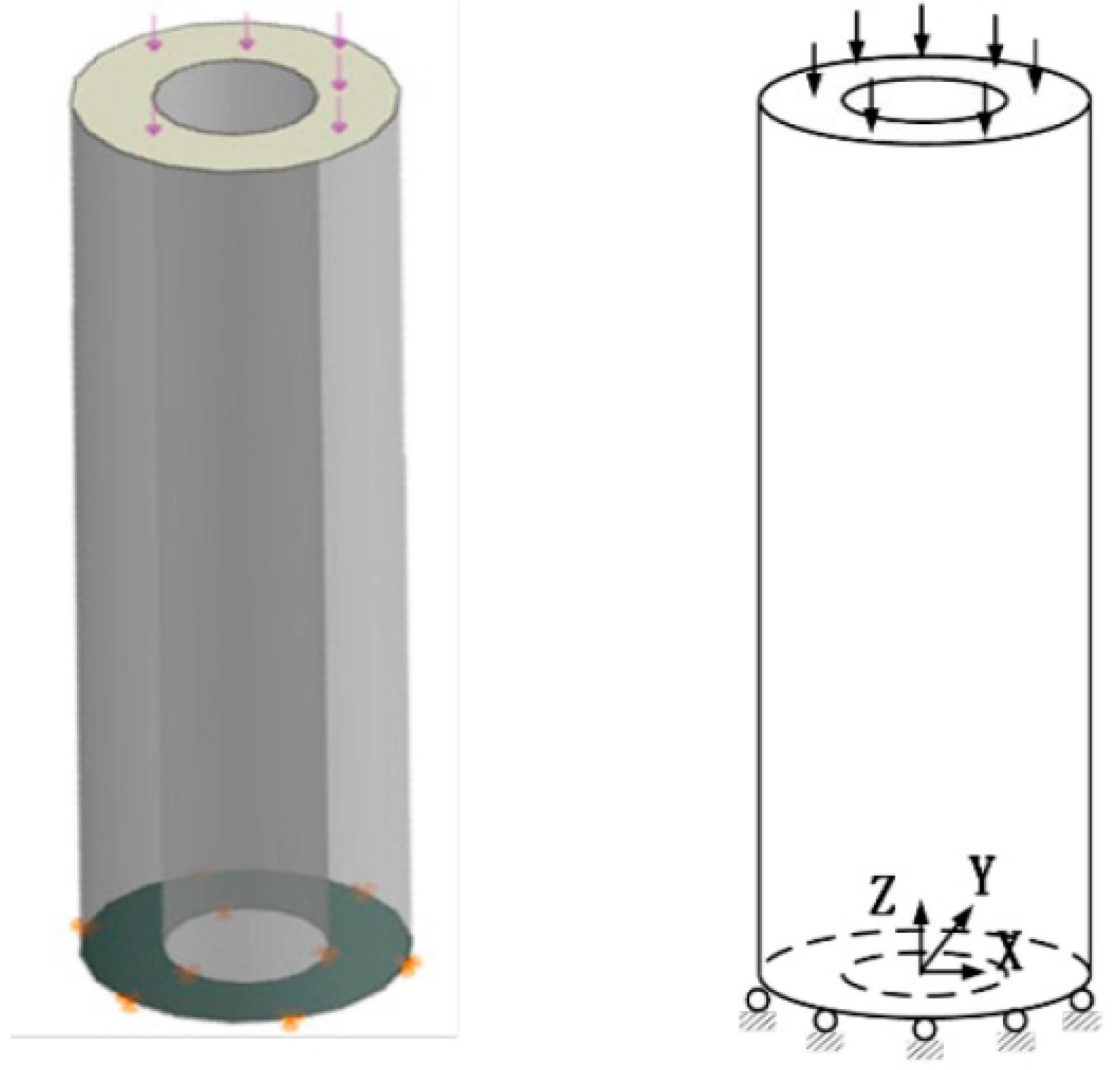
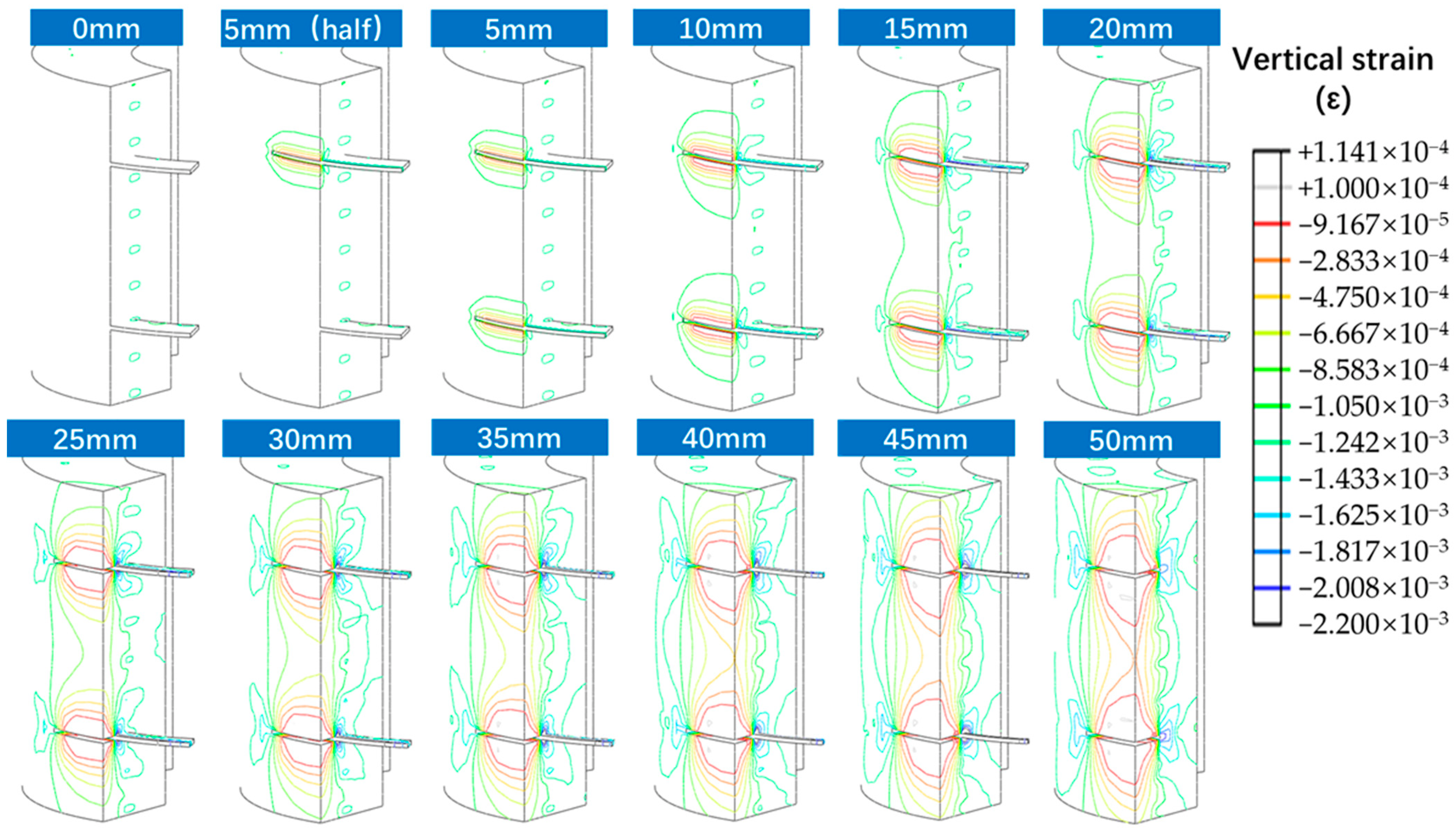
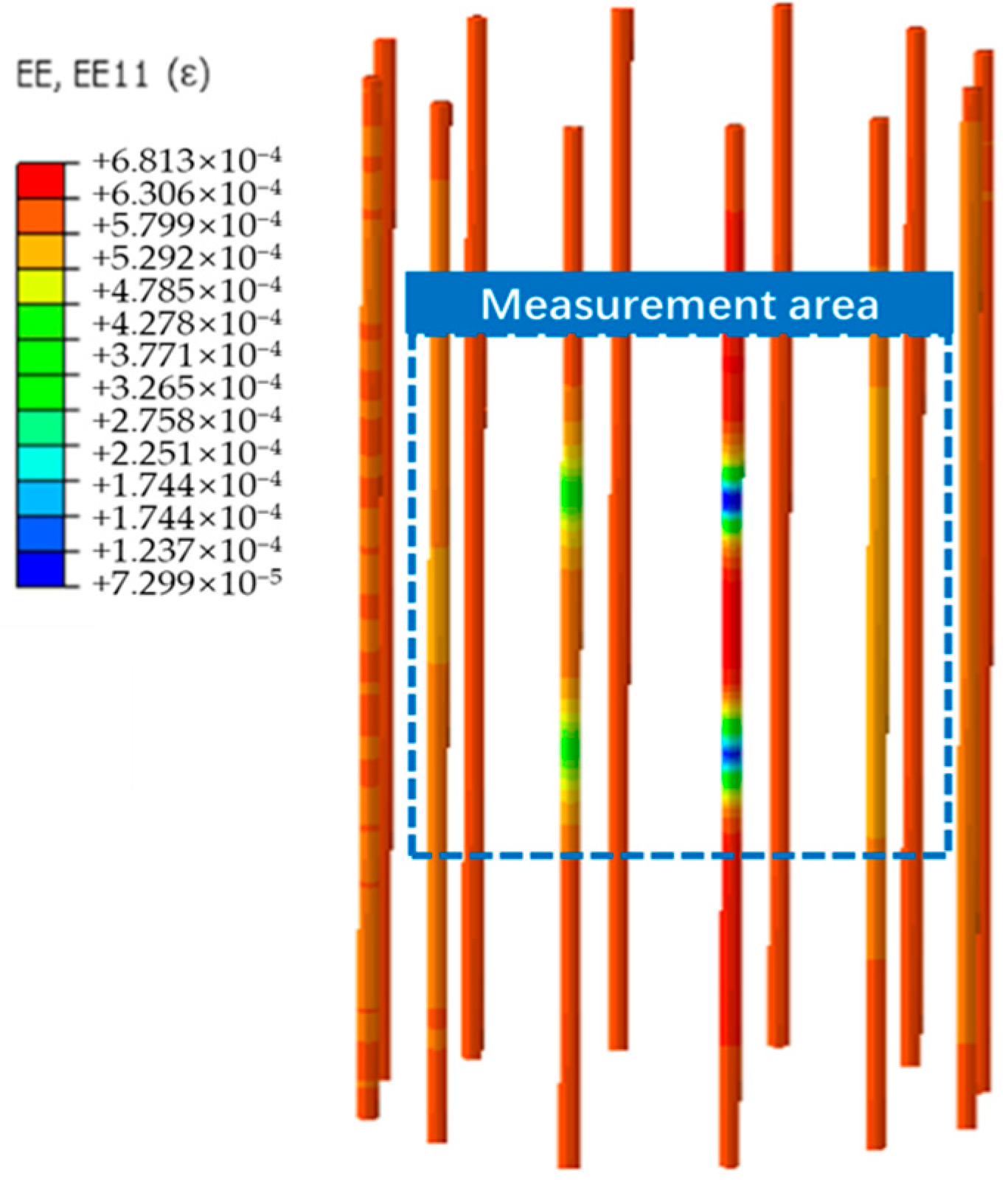

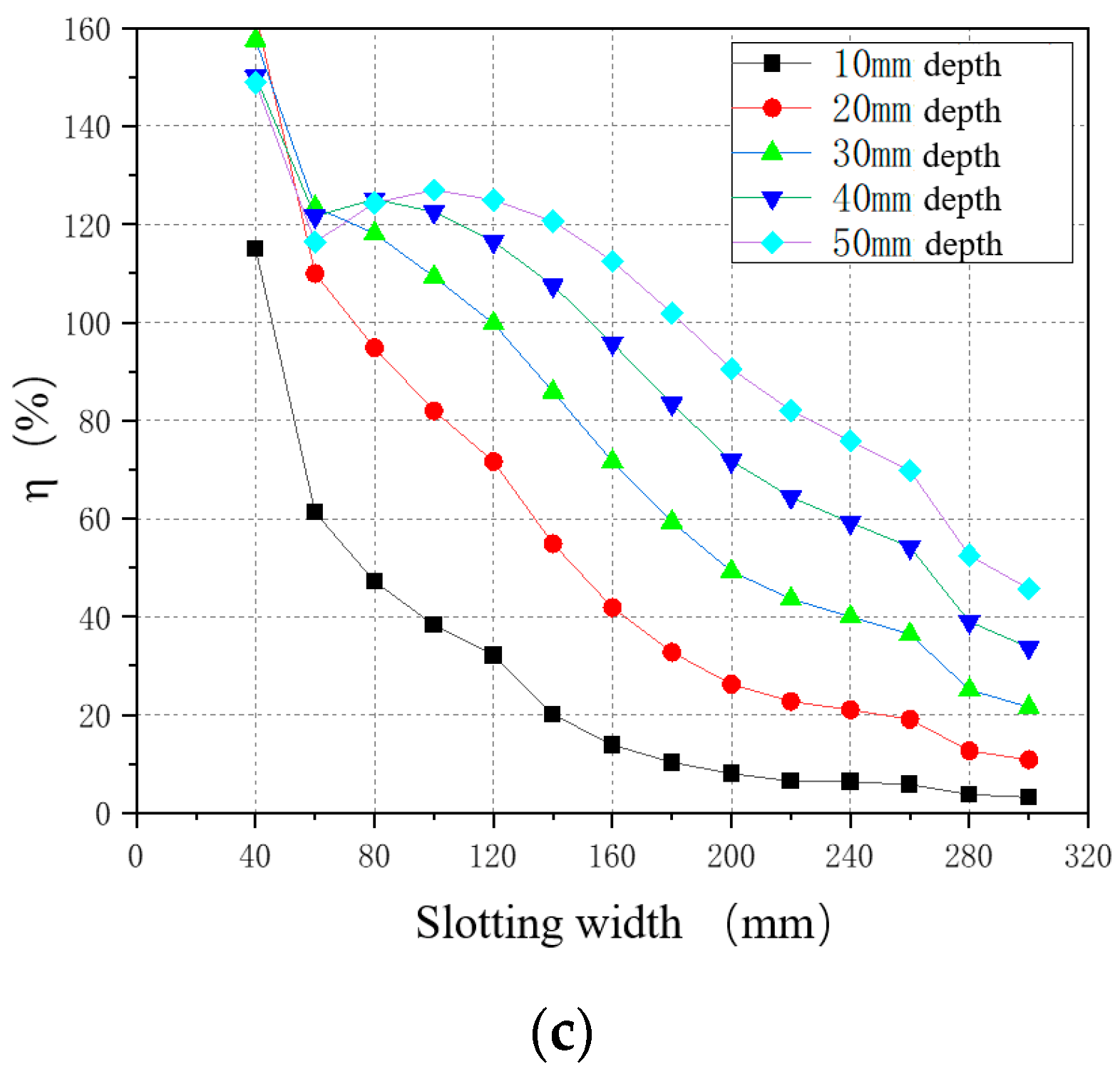



Disclaimer/Publisher’s Note: The statements, opinions and data contained in all publications are solely those of the individual author(s) and contributor(s) and not of MDPI and/or the editor(s). MDPI and/or the editor(s) disclaim responsibility for any injury to people or property resulting from any ideas, methods, instructions or products referred to in the content. |
© 2023 by the authors. Licensee MDPI, Basel, Switzerland. This article is an open access article distributed under the terms and conditions of the Creative Commons Attribution (CC BY) license (https://creativecommons.org/licenses/by/4.0/).
Share and Cite
Li, J.; Li, B.; Chen, D.; Wu, C.; Zhu, H. Stress Detection of Precast Pipe Piles Based on the Low-Loss Slotting Method. Buildings 2023, 13, 648. https://doi.org/10.3390/buildings13030648
Li J, Li B, Chen D, Wu C, Zhu H. Stress Detection of Precast Pipe Piles Based on the Low-Loss Slotting Method. Buildings. 2023; 13(3):648. https://doi.org/10.3390/buildings13030648
Chicago/Turabian StyleLi, Jinbao, Biqing Li, Degen Chen, Chang Wu, and Hong Zhu. 2023. "Stress Detection of Precast Pipe Piles Based on the Low-Loss Slotting Method" Buildings 13, no. 3: 648. https://doi.org/10.3390/buildings13030648




